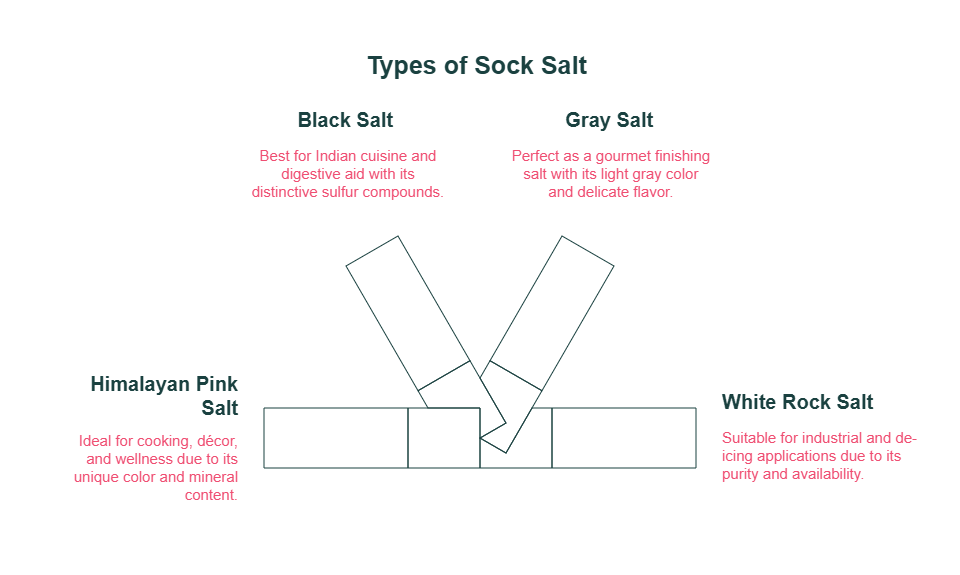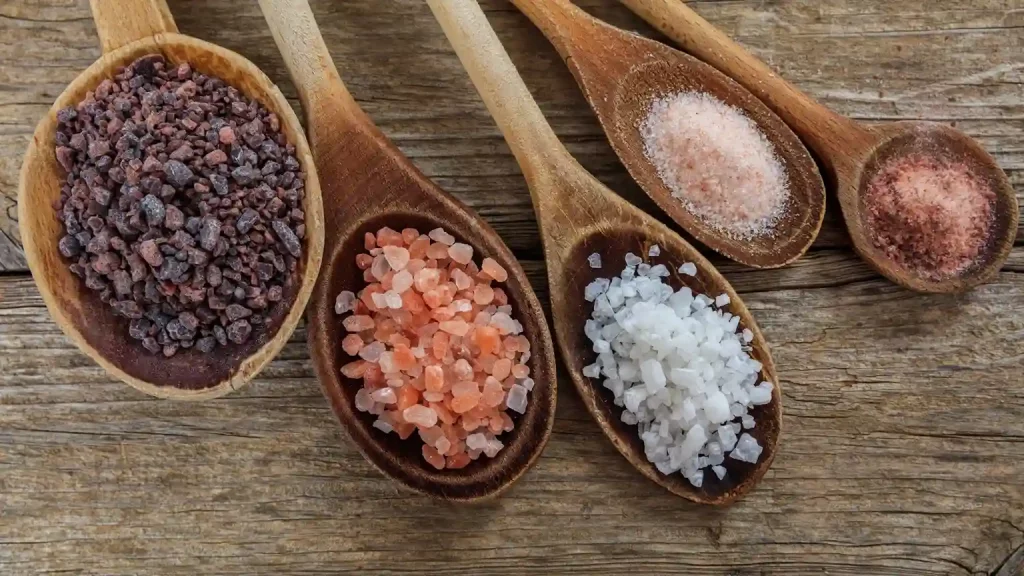What Is Rock Salt? Formation, Uses, and Facts You Should Know
- Zayan Rauf

Rock salt you’ve seen in your kitchen, on icy roads, or even glowing inside beautiful salt lamps. But what exactly is rock salt, and why is it so special? In this guide, we’ll explore what rock salt is, how it forms, and the many ways it’s used, from cooking to wellness.
Let’s explore the wonderful world of this natural mineral, and delve into why Sobaan Salts – a highly reputable name when it comes to Himalayan salt, is happy to introduce you to this ancient bounty from the hills!
Table of Contents
What Is Rock Salt?
Rock salt, also known as halite, is a naturally occurring mineral form of sodium chloride (NaCl), the same compound found in table salt. However, unlike refined salt, rock salt is mined directly from underground deposits that formed millions of years ago when ancient seas evaporated.
Interestingly, commercial rock salt usually boasts 95–99% purity, with only tiny traces of minerals like gypsum that give it a distinct earthy texture and taste. [1]
And if you think we’re running out of it, not even close. Rock salt resources are considered virtually inexhaustible worldwide, with ancient deposits continuously recycled through geological processes such as diagenesis and metamorphism. [2] This abundance makes it one of the planet’s most dependable natural materials.
Rock salt is more coarse and unrefined, often containing natural minerals like calcium, magnesium, potassium and iron which lend unique colors and fuller flavor.

How Is Rock Salt Formed?
The very beginning of the process of salt itself starts with prehistoric oceans and seas. Eventually the residual salt becomes covered with layers of mud and rock. Under pressure and heat for millions of years, it hardens into what today we call rock salt beds.
This natural process is why each salt deposit carries its own unique mineral signature and color. For example:
- Himalayan pink salt gets its hue from trace minerals like iron and magnesium.
- Black salt (Kala Namak) develops sulfur compounds, giving it a distinctive taste.
It’s truly nature’s way of preserving the ocean’s essence beneath the Earth’s crust.
Did You Know?
In Poland’s Zechstein salt beds, rock salt accounts for nearly 95% of the country’s total salt reserves, a striking example of geological concentration. [3]
Where Is Rock Salt Found?
Rock salt deposits exist all around the world, though some regions are especially rich in them. Major sources include:
Country | Famous Mines / Regions | Unique Features |
Pakistan | Khewra Salt Mine (Punjab) | One of the world’s largest and oldest salt mines, producing Himalayan pink salt. |
United States | Michigan, New York, Ohio | Massive underground salt domes used for de-icing and industrial salt. |
Germany | Berchtesgaden Mine | Known for its pure white salt and historical tunnels. |
Poland | Wieliczka Salt Mine | UNESCO World Heritage Site with salt sculptures and chambers. |
The Khewra Salt Mine in Pakistan, where Sobaan Salts sources much of its Himalayan salt, is over 250 million years old, a natural wonder and a global supplier of high-quality rock salt.
Types of Rock Salt

There are several types of rock salt, each with its own texture, color, and mineral composition:
Type | Color | Origin | Common Uses |
Himalayan Pink Salt | Pink to red | Pakistan | Cooking, décor, lamps, and wellness. |
Black Salt (Kala Namak) | Dark brown / black | South Asia | Indian cuisine, digestive aid. |
Gray Salt (Fleur de Sel) | Light gray | France | Gourmet finishing salt. |
White Rock Salt | White | Global | Industrial and de-icing applications. |
Each type of rock salt carries a unique flavor profile and aesthetic appeal, making it suitable for both culinary and decorative uses.
Explore: Rock Salt Vs Sea Salt
Uses of Rock Salt
Rock salt is far more versatile than most people realize. Its natural mineral content and texture make it valuable for several purposes:
1. Culinary Uses
Rock salt is widely used in cooking not just for flavor, but for the minerals it provides. It can:
- Season dishes with a subtle, earthy taste.
- Preserve meats, pickles, and cheeses.
- Be used in salt blocks for grilling or serving.
2. Industrial Uses
Rock salt plays a major role in:
- De-icing roads during winter.
- Water softening, helping remove calcium and magnesium from hard water.
3. Wellness and Décor
- Himalayan salt lamps are believed to purify the air.
- Bath salts promote relaxation and skin health.
At Sobaan Salts, natural Himalayan rock salt is carefully mined and refined to preserve its purity ensuring quality that meets both culinary and wellness needs.
Explore: Himalayan Rock Salt Products
What Is Rock Salt Used for in Cooking?
In the kitchen, rock salt shines because of its coarser crystals and mineral richness. It’s perfect for:
- Cooking and roasting: Enhances flavor while maintaining food moisture.
- Finishing salt: Sprinkled on dishes to add crunch and visual appeal.
- Salt crust baking: Used to encase meats or fish for a tender, juicy texture.
Its lower sodium concentration compared to table salt also makes it a more balanced option for those seeking natural seasoning.
Read:
How to Use Himalayan Salt for Cooking
Can You Safely Eat Himalayan Rock Salt
What Is Rock Salt for Ice Cream?
You might be surprised, but rock salt plays a crucial role in traditional ice cream making!
When placed around ice in traditional ice cream makers, it reduces the freezing point of water so the ice cream mix freezes more quickly and uniformly.
This pelting adds a smooth, creamy texture and it’s also a fun chemistry lesson. So the next time you savor homemade ice cream, consider that rock salt is the unsung hero of that perfect scoop.
Find out: How Rock Salt Makes Ice Colder
Amazing Facts About Rock Salt
- Rock salt is over 250 million years old in some regions.
- It forms naturally from evaporated ancient seas.
- Contains essential trace minerals like iron, magnesium, and potassium.
- Used in cooking, de-icing, spa treatments, and décor.
- Himalayan pink salt is one of the purest forms of rock salt on Earth.
Read About: Himalayan Salt History
Health and Environmental Aspects
Rock salt is rich in trace minerals that can help balance electrolytes and support hydration. However, it should still be consumed in moderation, like all salts.
From an environmental perspective, traditional mining methods, such as those used by Sobaan Salts in Pakistan, are eco-friendly and ensure minimal disturbance to the surrounding ecosystem.
Did You Know?
Mining and processing rock salt safely requires deep geological knowledge. Because halite formations respond to pressure, understanding stress gradients around 23 kPa per 100 m is crucial for maintaining structural stability. [4]
Where to Buy Rock Salt
When buying rock salt, always look for authenticity and purity. Natural, non-refined salts retain beneficial trace minerals and flavor.
You can find premium-grade Himalayan rock salt from Sobaan Salts, a trusted brand offering natural, food-grade, and wellness-grade salt products directly sourced from the Khewra Salt Mines in Pakistan.
Key Takeaways
- Rock salt is a natural mineral (NaCl) formed from ancient sea evaporation.
- It’s mined globally, with Himalayan pink salt being the most popular variety.
- Used in cooking, preservation, ice cream making, and industrial applications.
- Rich in essential minerals and less processed than table salt.
- Brands like Sobaan Salts ensure quality and sustainability in every grain.
Rock salt is more than just seasoning, it’s a piece of Earth’s natural history, carrying the purity of ancient oceans right to your plate.
References
- Bernal, J. D., & Fowler, R. H. (1933). A Theory of Water and Ionic Solution, with Particular Reference to Hydrogen and Hydroxyl Ions. Proceedings of the Royal Society A: Mathematical, Physical and Engineering Sciences, 147(861), 370–384. https://royalsocietypublishing.org/doi/abs/10.1098/rspa.1934.0108
- Borrmann, G. (1994). Crystal structure refinement of NaCl and KCl at high pressures. Journal of Physics and Chemistry of Solids, 55(9), 977–983. https://www.sciencedirect.com/science/article/abs/pii/003707389400093A
- Rees, D. E. (2002). Spectroscopic Studies of Planetary Atmospheres: Implications for Surface Chemistry and Mineralogy. European Space Agency Special Publication (ESA SP-518), 485–490. Retrieved from
https://adsabs.harvard.edu/full/2002ESASP.518..485R - Robertson, W. H., & Saykally, R. J. (1999). Infrared Spectroscopy of Hydrogen-Bonded Clusters: Insights into the Nature of the Hydrogen Bond. The Journal of Physical Chemistry A, 103(24), 5493–5500.
https://pubs.acs.org/doi/abs/10.1021/jp993010z
Share This Post
Article By

